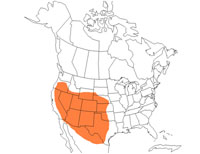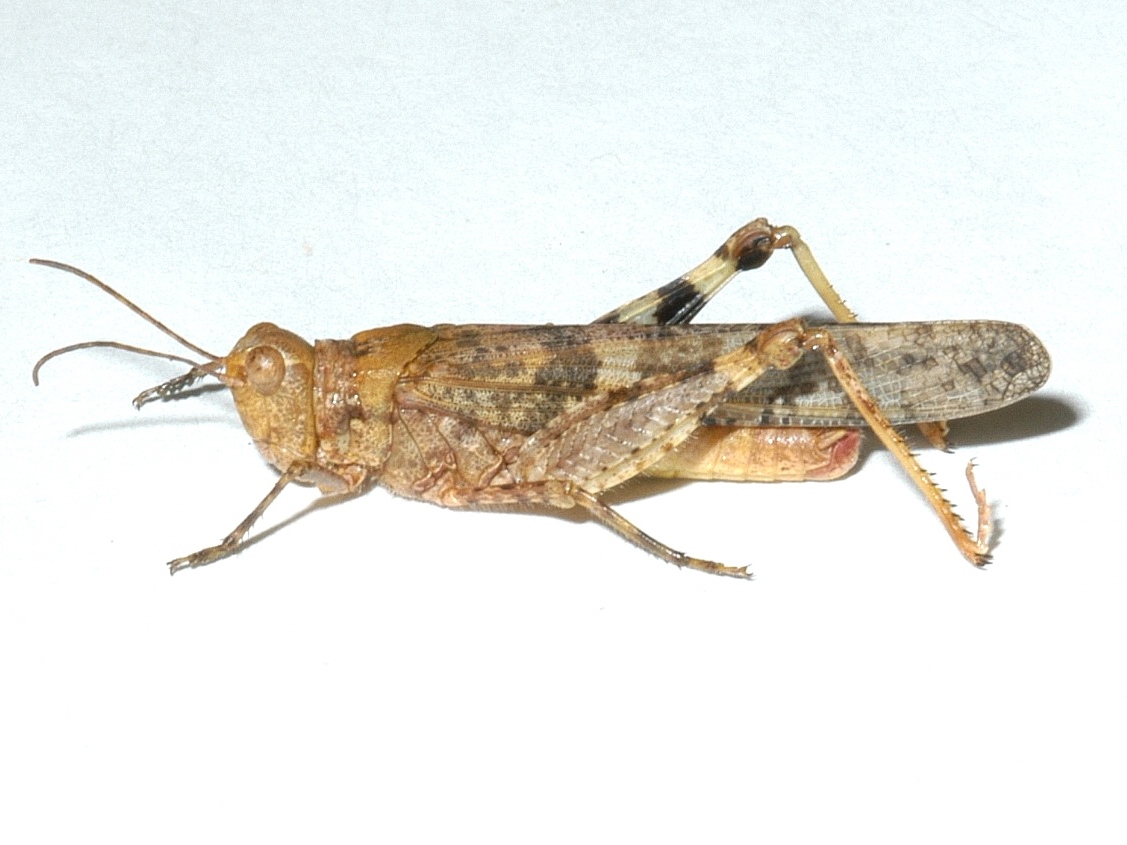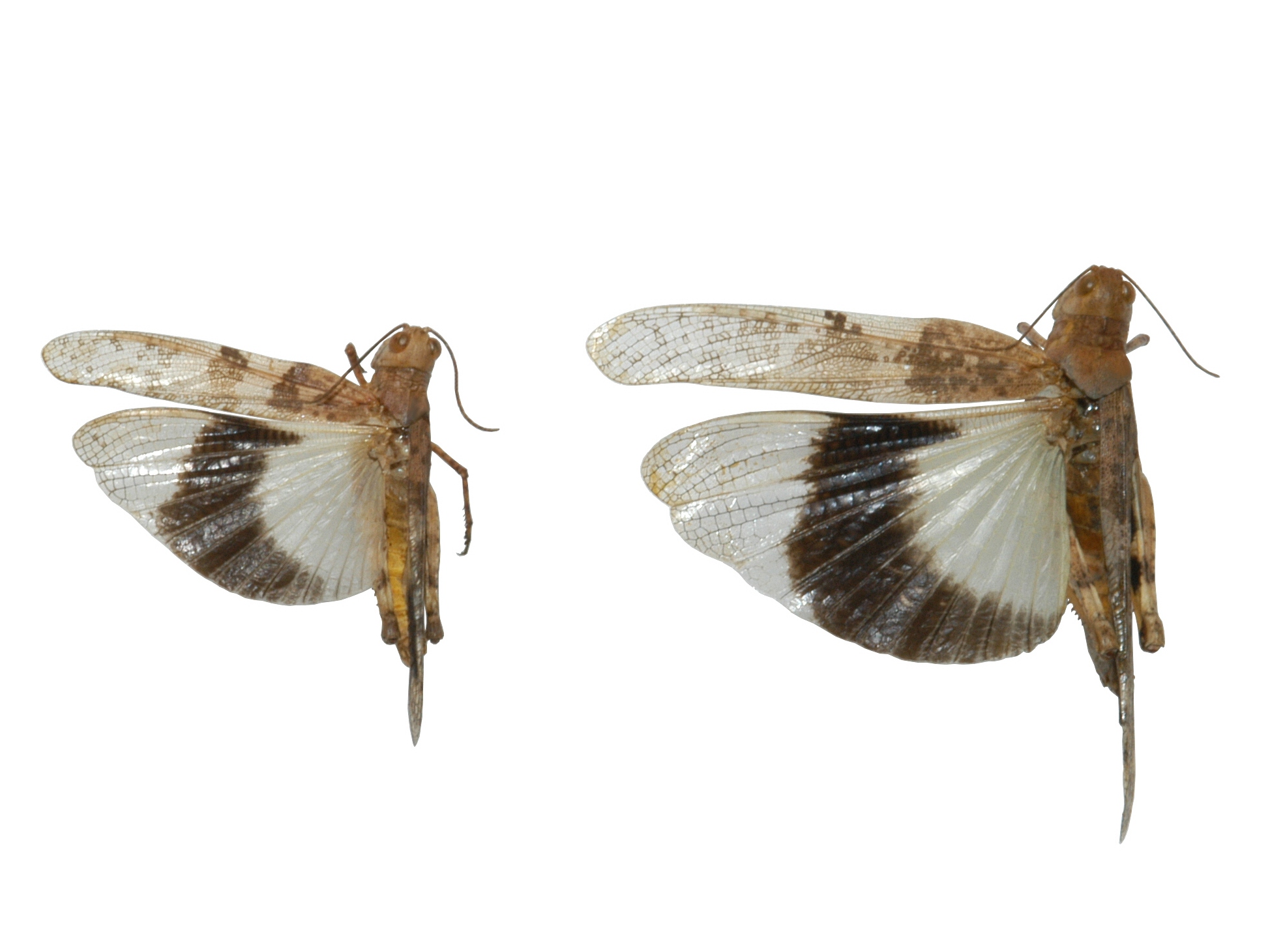Trimerotropis salina
|
Geographic range of Trimerotropis salina (McNeill)
|
|
Fig 1, adult male
|
|
Fig. 2, adult female
|
|
Fig. 3, dorsal view of Great Basin grasshopper
|
Species
Great Basin grasshopper
Trimerotropis salina (McNeill)
Subfamily Oedipodinae
Identification
Pale brown or grayish-brown in color. Tegmina possess vague bands, which are variable depending upon location. Hind wings are yellow with a black band, but the black band may be poorly developed in some populations. Inner surface of the hind femur white with black marking. Hind tibia are pale yellow to orange, although yellow is much more common.
This species could be confused with T. pallidipennis, but is lighter in color and lacks well defined bands on the tegmina.
Distribution and habitat
Trimerotropis salina ranges from Texas north to Nebraska and west into California and Oregon. It is found in alkali areas and salt flats with growth of saltgrass (Distichlis stricta).
Economic importance
Not economically important.
Food preferences
Little is known, but likely a grass feeder. Trimerotropis salina has been observed to feed on alkali sacaton (Sporabolus airoides) and saltgrass (Distichlis stricta).
Dispersal and migration
Little is known, but populations are highly localized and habitat specific.
Hatching
Not well known.
Nymphal development
Nymphs are present in the spring.
Adults and reproduction
Adults are present from July to September.
Population ecology
Not well known due to the low abundance and rarity. Based on morphological comparison, two populations from western and eastern Nebraska appear distinct.
Daily activity
Not known.
Source and date
University of Nebraska June 2011 by Sean Whipple & Mathew L. Brust
Selected references
Brust, M. L., W. W. Hoback, and R. J. Wright. 2008. The Grasshoppers (Orthoptera: Acrididae and Romaleidae) of Nebraska. University of Nebraska-Lincoln Extension. 138pp.
Capinera, J.L., and T.S. Sechrist. 1982a. Grasshopper (Acrididae) hostplant associations: Response of grasshopper populations to cattle grazing intensity. Can. Entomol. 114:1055-1062.
Capinera, J.L., and T.S. Sechrist. 1982b. Grasshoppers (Acrididae) of Colorado: Identification, Biology and Management. Colorado St. Univ. Exp. Sta., Fort Collins. No. 584S, 161 pp.
Otte, D. 1984. The North American Grasshoppers, Volume II, Acrididae: Oedipodinae. Harvard University Press, Cambridge, MA. 366 pp.





